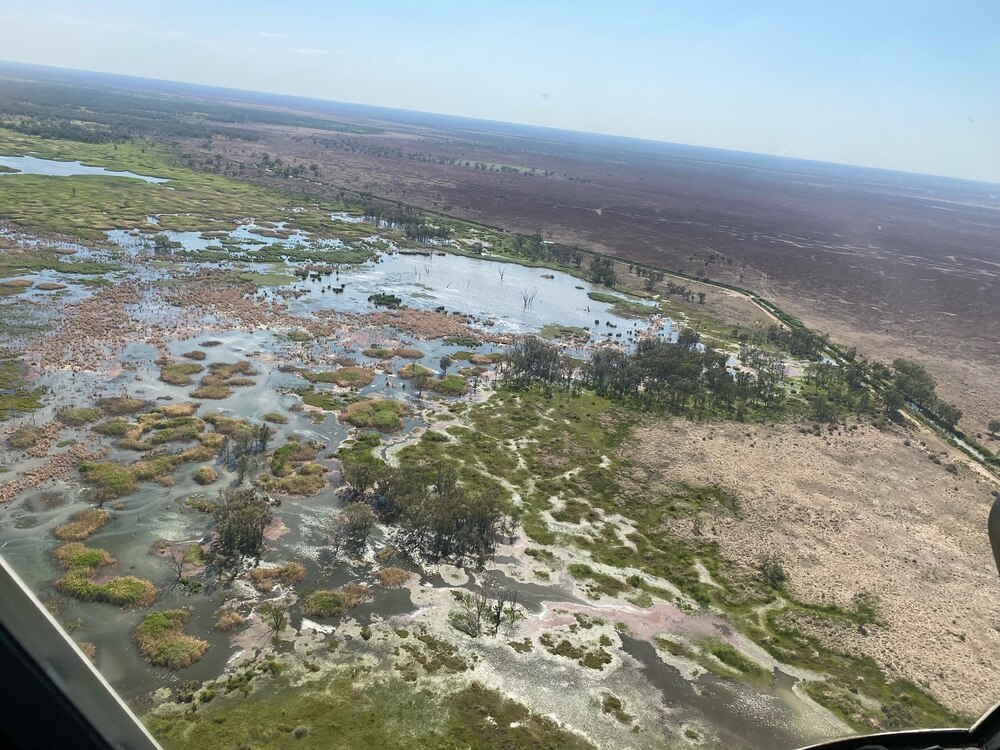Boost for Macquarie Marshes with water release
Kristin Murdock
21 October 2023, 6:40 AM
El Nino is making its presence felt with a dry spring leading into what is predicted to be a hot, dry summer across the Western Plains.
In good news, native fish and waterbirds who make their home in the iconic Macquarie Marshes will not be affected by this change in climactic conditions, thanks to a water release announced this week.
This will be a huge benefit to the wetland and its inhabitants, according to Department of Planning and Environment (DPE) Wetland and Rivers Senior Conservation Officer, Tim Hosking.
“The past few years have seen the Macquarie Marshes bounce back from the record drought and build up some resilience. We’ll work to keep that in place, as having a healthy landscape before heading back into dry times means the wetlands will persist longer and recover better,” Mr Hosking said.
Commonwealth Environmental Water Holder Dr Simon Banks said his recent visit to the Macquarie Marshes allowed him to see first-hand how the wetland had recovered following sequential wet years and the strategic use of water for the environment.
"The Marshes and Macquarie River serve as nurseries for fish and waterbirds, so both floodwaters and environmental water are helping build native fish and waterbird populations in the Murray-Darling Basin,” Dr Banks said. “Having seen extensive waterbird breeding in the marshes in the past couple of years, we need to provide the best conditions possible for young birds to thrive and mature so they can reach breeding age."
Dr Banks said this helps build resilience in waterbird populations, especially in endangered species such as the Australasian Bittern.
“For native fish we know that river flows provide cues for them to breed and move between rivers – we use water for the environment to prompt or lengthen periods of fish breeding," he said.

This section of the Marshes is currently drying. PHOTO: M Pawley
As the Black box-Coolabah woodlands cannot be reached by environmental water, this year’s plan is to build the resilience of 20,000 hectares of river red gum woodlands while looking after the inner 20,000 hectares of reedbeds, water couch and denser red gum forests.
“It is much more effective to provide environmental water to these large woodland areas this year, rather than wait until dry conditions become worse. If drought conditions set in in the next few years, we’ve kept water aside to look after core wetlands areas,” Mr Hosking said. “The flows in 2022–23 provided a much-needed boost to steadily declining waterbird populations. Water for the environment in the Macquarie Marshes will provide food sources for waterbirds, including young birds hatched in the past two years of significant waterbird breeding.”
Dr Banks said in working with NSW DPE the two teams could deliver important spring flows of the right size to support native fish populations, such as the threatened Murray cod and freshwater catfish.
“We’re lucky in the Macquarie to have a healthy cod population, but people are starting to get quite worried about catfish. These iconic native fish, which nest in warmer water over summer, have been impacted by drought and flow regulation,” Dr Banks said.
“Using water for the environment to provide more suitable flows over warmer months will give them a better chance to breed and help the population to recover.”
River flows will also maintain connection between the lower Macquarie River and Barwon River, helping migratory native fish like golden perch to move between the two river systems.



